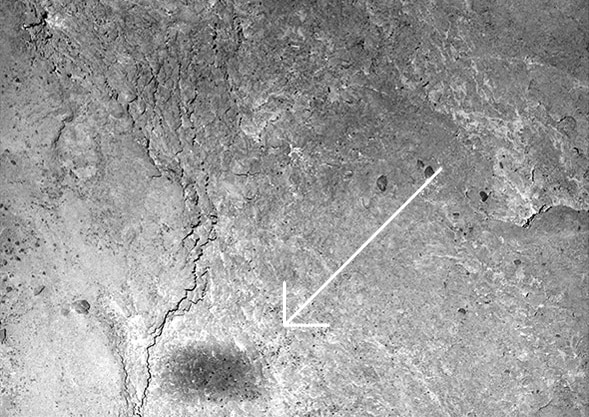Throwing Shade on a Comet

On Valentine’s Day last year—Feb. 14, 2015—the Rosetta space probe passed an astonishing six kilometers above the surface of the comet 67P/Churyumov-Gerasimenko. Mind you, the comet is only about four km end to end, so this was a very, very close shave.
The images it took at the time are amazing, but not for the obvious reason. Cooler to me was that the flyby was done in such a way that the Sun, spacecraft, and comet were in a perfect line.
So what? Well, that means the spacecraft could see its own shadow on the comet’s surface! I wrote about this event at the time; what’s new is that now all the high-resolution images taken during that pass are online… and that the folks at the European Space Agency put the shadow pass images together into this very cool animation:
Rosetta’s shadow moves from right to left along the bottom of the images. To give you a sense of scale, the shadow is about 20 x 50 meters across! The resolution of the full-scale images is about 11 centimeters per pixel. Wow.
This trajectory was chosen on purpose to measure just how the surface reflects light. With the Sun directly behind Rosetta (called “zero phase angle”) shadows disappear, and there’s a surge in light reflected back. Different surface materials and different surface textures affect that surge, so this is a way to observe that.
The pass took about three minutes, during which time the spacecraft took a dozen shots of ½ a second exposure each.
The high-res images from that pass that are online are fun to look at; here’s one I grabbed nearly at random:
“Nearly at random” just means I scrolled around until I found something neat. This shows a couple of boulders and assorted smaller rocks sitting in a grainy but smooth surface, probably from fine-grain material that’s flowed down from higher elevations into a pit. On the comet, some pits are where ice sublimates, turning directly into a gas, creating the cloud of material surrounding the comet itself, and which get blown back by the solar wind and pressure from sunlight to form the comet’s tail.
Note the parts of the surface that look slumped. That may be due to this very thing; the support under the material goes away as the ice sublimates, so you get a partial collapse. I’m guessing, but I’d bet that’s what this is. There are faint sweeping features around the rocks that look like regions where this happened before, and are being filled in by more material. There might even be some subtle wind action going on here as gas escapes; such things have been seen before on the comet.
The mission received an extension last year, and the end is planned for September 2016, when Rosetta will be gently guided down to the surface. Once down it’s not expected to function any more, but I hope we get images as it descends. What will the comet look like not from six km, but three? One? A hundred meters?
It wouldn’t be true to say I’m looking forward to the end of this wonderful and spectacular mission. But what an end it will be.


























